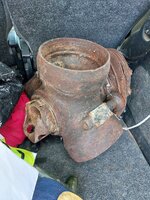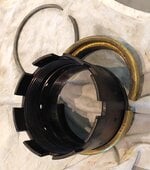- Thread starter
- #361
Hi Snautzer,I often have wondered why there are so few vdm documents.
Yes, I agree. There are enough documents to understand, if you research, but it is not easy as they are scattered and bloody difficult to find. In actual fact, there is possibly enough of a void for me to compile a book about the tech details of the VDM props and the Tech to go with it but, I doubt that any publisher would make it worthwhile. Tech does not sell well, even if you try to make it interesting. Take a look at Callum Douglas' fantastic co-authored book "Turbo/Supercharger Compressors and Turbines for Aircraft Propulsion in WWII" (TSCT). That is a Masterclass in the subject, but no publisher would take it as a print-run and it is on-demand expensive. I agree, it is technical but, it can be read by anyone and it is Superb to me.
So, unless I win the lottery, I won't be self-publishing anything!
Cheers
Eng


